What Is The Stone Church in Sapa?
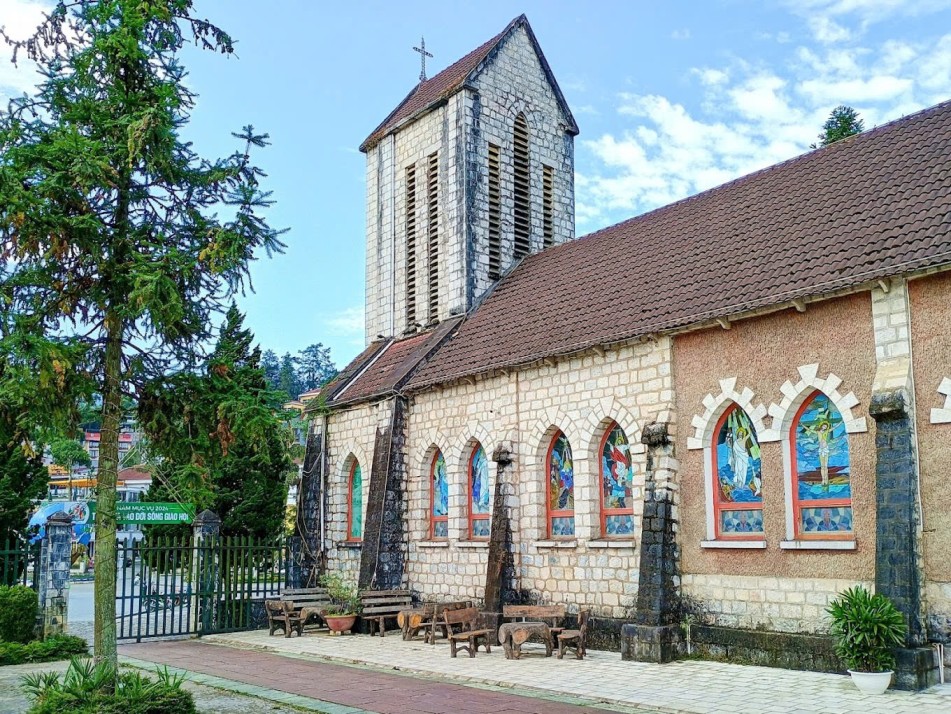 The Sapa Stone Church, officially known as the Church of Our Lady of the Rosary, stands prominently in the center of Sapa town. This Catholic church occupies a strategic location at the heart of the town square, making it impossible to miss during any visit to Sapa. The church’s impressive stone façade and distinct Gothic-inspired architecture create a striking contrast against the backdrop of Sapa’s misty mountains and traditional wooden structures.
For visitors planning their trip, the church is open daily from 6:00 AM until 8:30 PM, with special hours during religious services and holidays. The church is still used as a place of worship, with regular masses that people can politely attend.
The Sapa Stone Church, officially known as the Church of Our Lady of the Rosary, stands prominently in the center of Sapa town. This Catholic church occupies a strategic location at the heart of the town square, making it impossible to miss during any visit to Sapa. The church’s impressive stone façade and distinct Gothic-inspired architecture create a striking contrast against the backdrop of Sapa’s misty mountains and traditional wooden structures.
For visitors planning their trip, the church is open daily from 6:00 AM until 8:30 PM, with special hours during religious services and holidays. The church is still used as a place of worship, with regular masses that people can politely attend.
The Stone Church in Sapa’s History
Origins and Construction
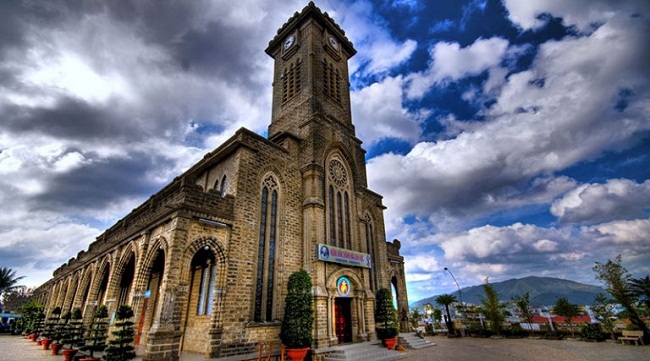 The history of the Stone Church starts in the early 1900s, during the French colonial era. The building started in 1895 and was finished in 1902, making it one of the oldest remaining colonial structures in the region. In the beginning, the church was built by French missionaries who wanted to bring religion to the remote mountains of northern Vietnam.
The building materials tell an interesting story about sticking with something even when things get hard. The church is often called the “Stone Church”, but its walls are made of stone that was mined in the area and materials that were brought in on the backs of horses and by human porters down dangerous mountain tracks. This is an amazing feat, given how far away Sapa is and how difficult the terrain is.
The history of the Stone Church starts in the early 1900s, during the French colonial era. The building started in 1895 and was finished in 1902, making it one of the oldest remaining colonial structures in the region. In the beginning, the church was built by French missionaries who wanted to bring religion to the remote mountains of northern Vietnam.
The building materials tell an interesting story about sticking with something even when things get hard. The church is often called the “Stone Church”, but its walls are made of stone that was mined in the area and materials that were brought in on the backs of horses and by human porters down dangerous mountain tracks. This is an amazing feat, given how far away Sapa is and how difficult the terrain is.
The Role of the Stone Church in Local Culture and Spirituality
The Stone Church in Sapa has been an important part of the religious and cultural life of the area ever since it was built. The church was not only a place of prayer, but also a place where people from European missionaries and local ethnic minorities could meet, learn, and share their cultures. Over time, a lot of the H’mong and Dao people in the area converted to Catholicism. They then made their own religious practices that combine native beliefs with Catholic rituals. This mixing of cultures can be seen in the bright traditional clothes that people from different ethnic groups wear to church services. These clothes make a visual tapestry that shows Sapa’s rich history. Today, the church helps both locals and tourists who want to connect spiritually or learn more about other cultures. People from villages nearby come to worship at the church on Sundays and religious holidays, making it a lively place that shows off the area’s living religious customs. For many Catholics from racial or ethnic minorities, the church is a mix of their old spiritual practices and their new Catholic faith.History Milestones
A lot of important events in Vietnam’s modern past have happened near the church. The church was damaged during the First Indochina War and other wars that followed, but it stood tall as a sign of strength. When Vietnam got its freedom, the church kept doing its religious work while adapting to changes in the government. As Sapa has become a more popular tourist spot over the last few decades, the church has become known as an important historical site that should be preserved. Renovations have helped keep its structure strong while staying true to the original architect’s design.Architectural Style of Sapa Stone Church
Gothic Influences
The Stone Church in Sapa is an example of a Gothic revival building that works well in Vietnam’s highlands. The amazing bell tower, which is about 20 meters high and topped with a big stone cross that can be seen from many places around Sapa, is what makes it stand out. The front of the stone church has pointed arches, buttresses, and a rose window that are typical of Gothic architecture that was brought to Vietnam’s northern mountains from Europe. The bell tower holds a huge bell that was made in France and brought to Sapa over rough mountain terrain. When it is rung, the bell’s powerful tones can be heard all over the valley, calling people to service and marking important religious events.Unique Structural Elements
 What makes the Stone Church architecturally fascinating is how it adapts European church design to local conditions. The building’s thick stone walls provide natural insulation against Sapa’s sometimes harsh mountain climate, while its elevated position helps mitigate the effects of the region’s heavy seasonal rainfall.
The church’s layout follows a traditional cruciform plan with a central nave and transepts, though on a smaller scale than European cathedrals. Local craftsmen worked alongside French architects, incorporating subtle Vietnamese aesthetic elements into what appears at first glance to be a purely European structure.
What makes the Stone Church architecturally fascinating is how it adapts European church design to local conditions. The building’s thick stone walls provide natural insulation against Sapa’s sometimes harsh mountain climate, while its elevated position helps mitigate the effects of the region’s heavy seasonal rainfall.
The church’s layout follows a traditional cruciform plan with a central nave and transepts, though on a smaller scale than European cathedrals. Local craftsmen worked alongside French architects, incorporating subtle Vietnamese aesthetic elements into what appears at first glance to be a purely European structure.
Interior Design and Artifacts
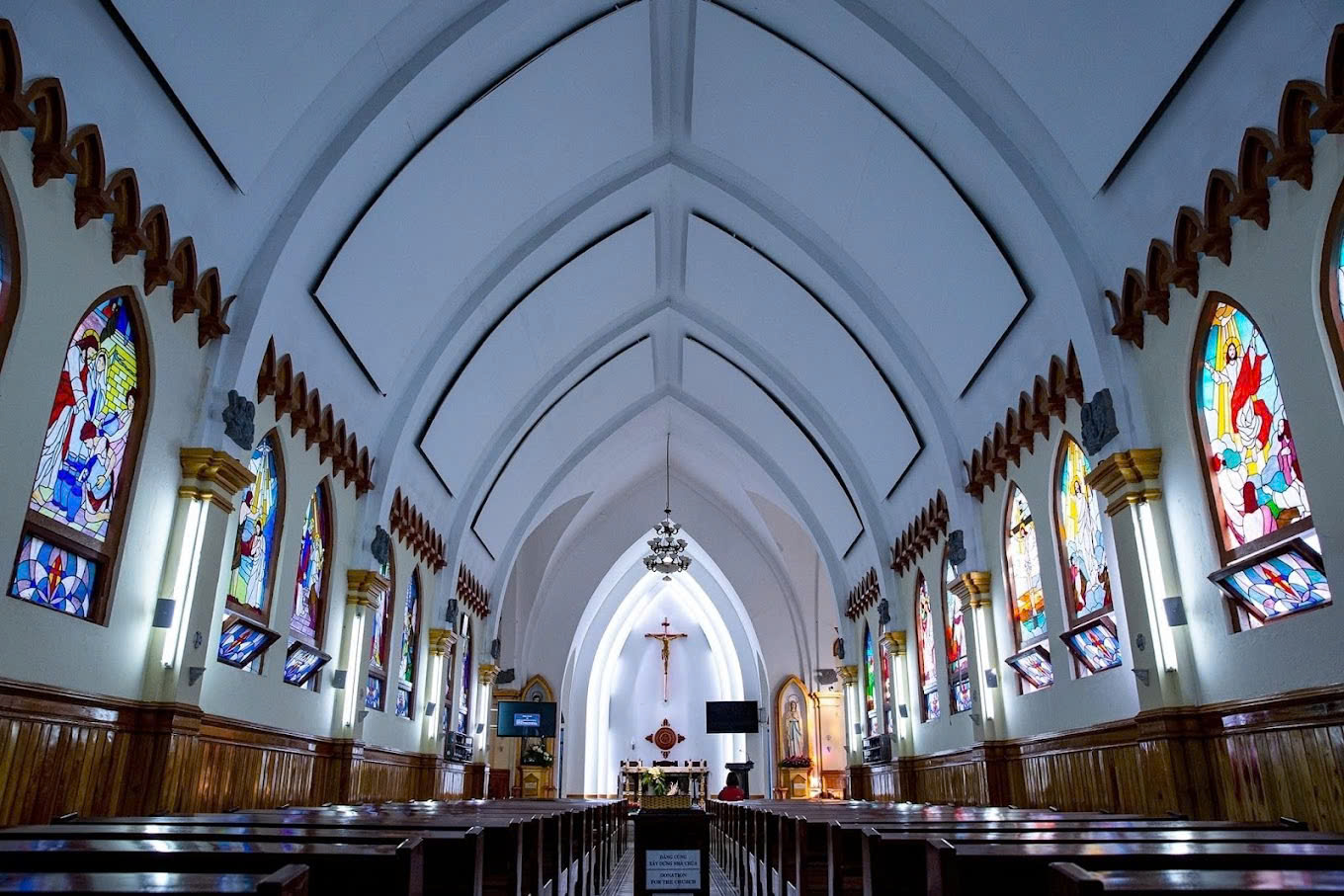 The inside of the church is pretty simple but still very respectable. The main altar is in the middle of the wooden pews, and stained glass windows screen the light to make the room feel peaceful. Even though the decorations inside aren’t as fancy as those in many European churches, the mountain setting gives it a reverent feel.
Hand-carved confessionals made of wood, statues of Catholic saints, and traditional religious art are some of the most interesting features. The church also has historical artifacts from the time when missionaries first came to Sapa. These give visitors a look into the religious past of the area.
The inside of the church is pretty simple but still very respectable. The main altar is in the middle of the wooden pews, and stained glass windows screen the light to make the room feel peaceful. Even though the decorations inside aren’t as fancy as those in many European churches, the mountain setting gives it a reverent feel.
Hand-carved confessionals made of wood, statues of Catholic saints, and traditional religious art are some of the most interesting features. The church also has historical artifacts from the time when missionaries first came to Sapa. These give visitors a look into the religious past of the area.
Why Visit Sapa Stone Church?
Cultural Experience
When you go to the Stone Church in Sapa, you can see how European colonial influences and native Vietnamese mountain traditions came together in a very interesting way. On Sunday mornings, people of all different ethnicities come to church to pray. Many of them wear their traditional clothes while going to Catholic services. The way these two cultures have come together shows how religious rituals can change and adapt to new situations. The church gives visitors who want to learn more about Vietnam than just the usual tourist clichés a look into the complex cultural tapestry of the northern highlands.Photographic Opportunities
For photography enthusiasts, the Stone Church in Sapa offers compelling visual compositions regardless of weather conditions. On clear days, the church looks beautiful against the blue sky and mountains in the background. When it’s foggy in Sapa, the church stands out dramatically from the mist, making dreamlike pictures that capture the mysterious feel of this mountain area. The interior also offers an interesting play of light and shadow, especially during morning hours when sunlight streams through the stained glass windows. From above, the church area is a great place to see how people live in Sapa and capture real moments of their daily lives.
The interior also offers an interesting play of light and shadow, especially during morning hours when sunlight streams through the stained glass windows. From above, the church area is a great place to see how people live in Sapa and capture real moments of their daily lives.
Visiting Tips for the Stone Church in Sapa
Best Time to Visit
 While the Stone Church in Sapa can be visited year-round, certain times offer distinct experiences. September to November provides the most reliable weather with clear skies and comfortable temperatures, offering excellent visibility for photography and outdoor exploration around the church.
For those interested in cultural experiences, visiting during Sunday morning mass (typically around 8:30 AM) allows you to witness the church fulfilling its primary purpose as a place of worship. Major Catholic holidays such as Christmas and Easter bring special decorations and ceremonies that showcase the church at its most vibrant.
While the Stone Church in Sapa can be visited year-round, certain times offer distinct experiences. September to November provides the most reliable weather with clear skies and comfortable temperatures, offering excellent visibility for photography and outdoor exploration around the church.
For those interested in cultural experiences, visiting during Sunday morning mass (typically around 8:30 AM) allows you to witness the church fulfilling its primary purpose as a place of worship. Major Catholic holidays such as Christmas and Easter bring special decorations and ceremonies that showcase the church at its most vibrant.
Transportation Option for Visitors
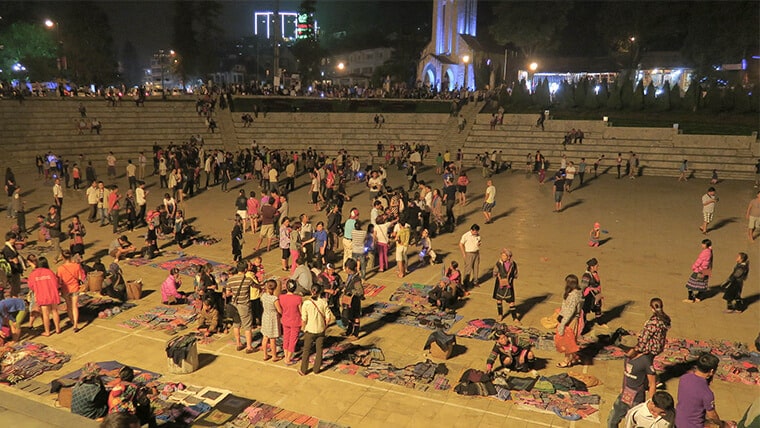 The Stone Church lies in a central location that makes it easily accessible from anywhere in town. From most hotels in Sapa, you can reach the church by a short walk through the town center. The church sits adjacent to the main town square, making it difficult to miss.
For those staying in Sapa accommodation that is farther from the town center, local taxis can be useful. Many guided tours of Sapa include the church as part of their itinerary, often providing historical context that enhances appreciation of the site.
The Stone Church lies in a central location that makes it easily accessible from anywhere in town. From most hotels in Sapa, you can reach the church by a short walk through the town center. The church sits adjacent to the main town square, making it difficult to miss.
For those staying in Sapa accommodation that is farther from the town center, local taxis can be useful. Many guided tours of Sapa include the church as part of their itinerary, often providing historical context that enhances appreciation of the site.
Practical Note for First-time Visitors
When you visit the Stone Church in Sapa, keep in mind that it is still a place of prayer and that you should treat it with care. Wearing the right clothes is important—don’t wear shorts, showing clothes, or hats inside the church. When services aren’t going on, you can usually take pictures inside, but be quiet and aware of the people who are there. The church grounds are open to everyone, but gifts are welcome to help keep the church in good shape. There are sometimes history handouts about the church near the door that can help you understand your own visits better.Conclusion
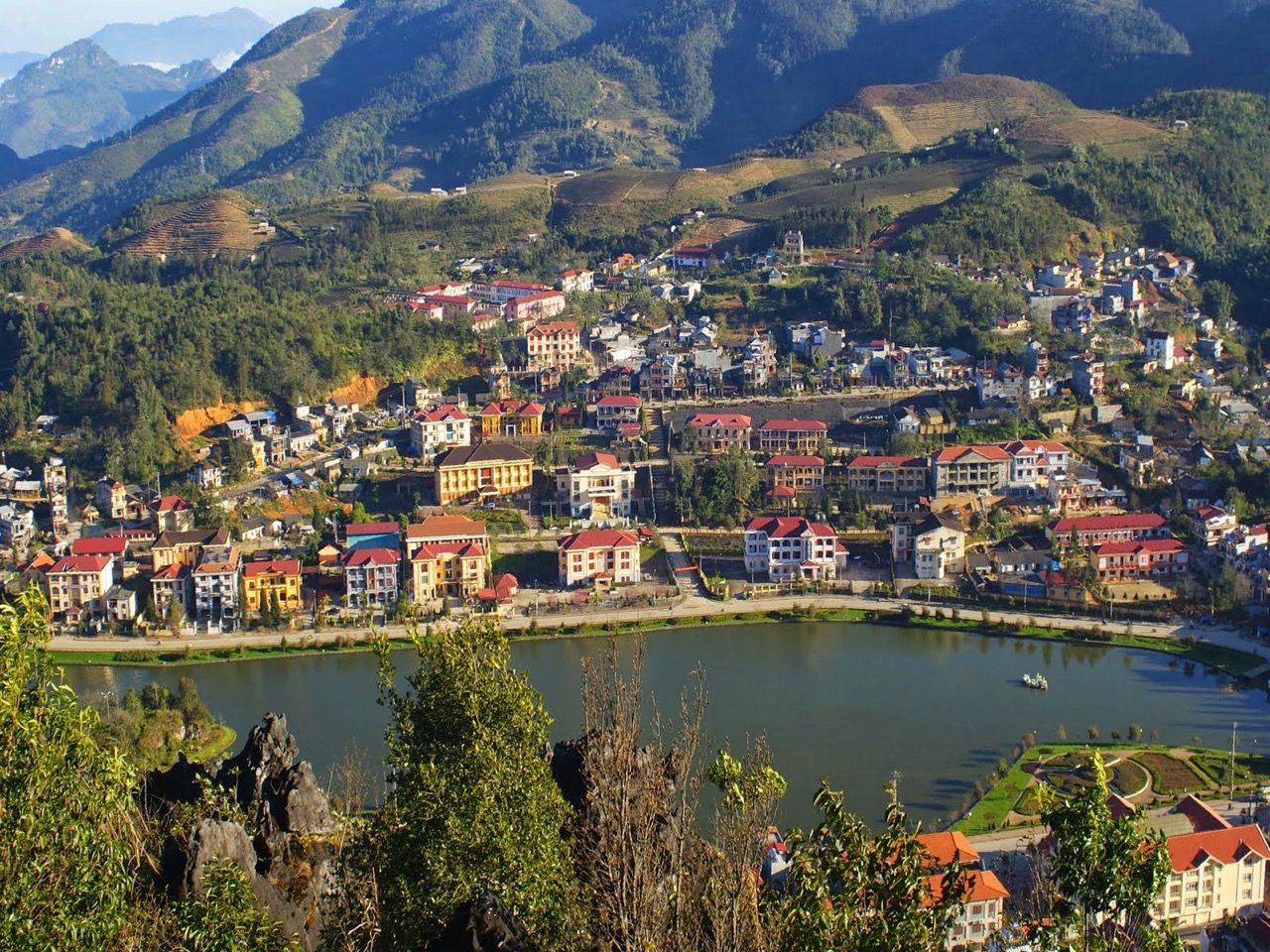 For travelers exploring Sapa’s magnificent landscapes and diverse cultures, the Stone Church offers a moment of reflection and a tangible connection to history. Whether you’re drawn by architectural interest, cultural curiosity, spiritual seeking, or simply the quest for perfect photographs, this remarkable structure rewards visitors with insights into Vietnam’s multifaceted heritage.
>>>> Check out the Best Things to Do in Sapa for your trip!
After exploring the iconic stone church in Sapa, why not discover more of this charming mountain town with YESD’s Sapa Vietnam tours? Our local-guided experiences take you beyond the town center to meet ethnic minority communities, hike through breathtaking terraced valleys, and enjoy authentic homestays that support local livelihoods. Travel with YESD means every step you take uplifts the community, preserves traditions, and brings you closer to the heart of Sapa. Contact us and travel with YESD Responsible Tours today!
For travelers exploring Sapa’s magnificent landscapes and diverse cultures, the Stone Church offers a moment of reflection and a tangible connection to history. Whether you’re drawn by architectural interest, cultural curiosity, spiritual seeking, or simply the quest for perfect photographs, this remarkable structure rewards visitors with insights into Vietnam’s multifaceted heritage.
>>>> Check out the Best Things to Do in Sapa for your trip!
After exploring the iconic stone church in Sapa, why not discover more of this charming mountain town with YESD’s Sapa Vietnam tours? Our local-guided experiences take you beyond the town center to meet ethnic minority communities, hike through breathtaking terraced valleys, and enjoy authentic homestays that support local livelihoods. Travel with YESD means every step you take uplifts the community, preserves traditions, and brings you closer to the heart of Sapa. Contact us and travel with YESD Responsible Tours today!
